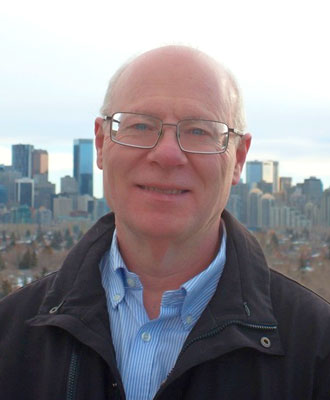Abstract
The current generation of commercial onshore seismic recording instruments is providing the industry with a wide range of cost effective options for acquiring reasonable quality seismic, safely and efficiently. Regrettably, it is also true that these systems are not suitable for the next generation of densely sampled, full wavefield, acquisition. Advancements in simultaneous source technology over the last decade have motivated an increasing implementation of fully sampled source grids, producing the advantage of very high fold, high quality seismic. So far, these advancements have not been reciprocally extended to the receiver side of acquisition. To date, the complementary application of deploying fully sampled receiver grids has been restricted to only a few test sites. This rectifiable situation represents one of the final remaining hurdles holding the industry back from ultra-dense, ultra-high-fold, seismic, offering the (as yet unrealized) promise of superb subsurface imaging quality.
There are a myriad of barriers inhibiting the practical deployment of dense receiver grids. For instance, a fully sampled grid of receivers, covering a commercial sized prospect, might require anywhere from 100,000 channels for shallow targets; and up to over a million recording channels, to fully sample the far offset reflections from deep objectives. Such ultra-high channel count crews would be extremely expensive to outfit. Assuming historical costs of recording equipment (circa $1000 per recording channel), a million channel crew would require upwards of a billion dollar capital expenditure. A million recording channels (nodes or cable) would probably also require several years to manufacture. In practice, considering the current recording node size and weight (per unit), fielding a million channels might take the better part of a year, just to deploy the first active recording patch. Collectively these three facts alone indicate why, with current existing technology, a Mega-channel crew would be impractical to deploy, and incompatible with cost effective seismic prospecting. This background context helps explain why we have yet to see any large scale commercial applications employing fully sampled receiver grids.
To address these barriers, several large energy companies have optimistically initiated a pursuit toward ultra-high channel count crews by launching collaborative R&D projects with competent industry partners. This trend started in February 2010 when Shell announced their million channel aspiration, along with two separate R&D collaborations, first with HP and then with PGS, to develop MEMS nodes and fibre optic cable respectively. Later, in September 2016, BP announced formation of an R&D collaborative partnership with Schlumberger and Rosneft to develop a new cable-less node for onshore seismic acquisition. In June 2017, Total, Wireless Seismic, and Geokinetics, announced a partnership to develop a system called “Next-Generation Land Seismic Acquisition: METIS”, intended to reduce cycle times by generating migrated images in real time. Total recently announced that they have successfully completed their 2017 METIS pilot trial in Papua New Guinea. This year, at the 2018 SEG annual meeting technical program in Anaheim; BP, Rosneft, and Schlumberger presented two papers describing the Nimble Node autonomous recorder R&D progress and results from early field trials: “The case for a nimble node, towards a new land seismic receiver system with unlimited channels”, (Ted Manning, et.al.) and “3D field trial using a new nimble node: West Siberia, Russia, (Chris Brooks, et.al.).
One of the smallest and lowest cost systems that is commercially available now is the SmartSolo Node, produced by Dynamic Technologies (DTCC), headquartered in Calgary. The SmartSolo Node nearly fits into a: 1L, 1Kg, $100. design envelope, probably still somewhat too cumbersome and expensive for outfitting a Mega-channel crew, but will certainly help shift the industry along towards higher channel counts in the near term.
While not quite yet available as commercial recording instruments, the aforementioned “late stage” R&D field trial results imply that the industry may well have access to ultra-high channel count crews in the near future, which then prompts the question: How best to utilize a Mega-channel crew? Our traditional, low density, acquisition geometry layout and field practices will need to be supplanted by more innovative approaches, if we want to take advantage of everything that full source and receiver grid survey designs can offer.
During this CSEG luncheon talk, I will investigate the practical aspects of implementing fully sampled source and receiver grid surveys in both open and forested terrain. These two dense 3D survey designs will be used to analyse various considerations related to equipment deployment and retrieval, novel field practices, data processing complications and opportunities, and expected imaging benefits.
Biography
Jack Bouska graduated with a Geophysics degree from the University of Alberta (1980), and worked at Seiscom-Delta (1981-83), Western Geophysical (1983-85), Dome Petroleum (1985-98), Amoco Canada (1988-98) and BP (1998-2015). While working in Calgary, and living abroad in London U.K. and Muscat Oman, Jack tackled a wide variety of acquisition and processing projects, sited in five different continents. His seismic innovations include invention of Sparse 3D, implemented in W. Canada and S. American Andes, as well as introducing novel acquisition techniques for seabed OBC-3D’s in the North Sea, Caspian Sea, Gulf of Suez, Abu Dhabi, Indonesia and West of Shetlands. While in Oman, Jack redefined acquisition productivity on several ultra-high speed Vibroseis surveys, made possible by his invention of Distance Separated Simultaneous Sweeping (DS3). In 2013 he moved back to Calgary to manage BP’s Oil Sands and E. coast Canadian offshore seismic programs, before retiring in 2015.
Jack's innovations in acquisition design and processing have been recognized by numerous geophysical societies; including the CSEG with the Best Theme Paper award in 1995, Best of Session papers in 1997 & 98 and Best Technical Luncheon talk of 2014. The SEG also awarded Jack the Best Paper in the Leading Edge 2005, and Honourable Mention in Best Paper category, 2005 National convention. Jack has served as an EAGE Distinguished Lecturer for 2007-2008. In 2009 he was selected as the SEG Spring Distinguished Lecturer in Geophysics. Jack is a member of the EAGE, SEG, CSEG, and APEGA, and continues to teach his EAGE seismic acquisition short course.






